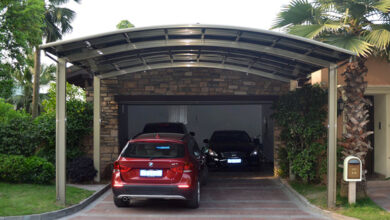
Mold in Air Conditioner: Know the Signs and How to Deal With It
According to some research, 70% of homes have mold in them.
If you think that you have mold in the air conditioner, you’re probably not alone.
Keep reading to discover what some of the signs of mold are and what you can do about it.
Table of Contents
Warning Signs
There are a few mold the in air conditioner symptoms that you need to watch out for. Knowing the warning signs can help you fix the problem before it gets too bad.
The first thing that you should notice is if you smell something musty. When mold starts growing, it’ll give off a musty smell. So if you have the main AC unit that is emitting smells, the HVAC might be the problem.
You should search throughout your house to see if you can find any signs of mold. If you can’t find any mold but still smell it, then you should check your unit.
You might notice that the smell gets stronger when your system is on. If you notice that you have more health problems when your AC goes on, this can also be a bad sign.
It might start allergic reactions or negative reactions. Most people will just have respiratory problems, but there could be other, more severe reactions.
You might also see signs of mold outside of the system. It normally looks fuzzy, and it can be either black or green. Sometimes mold is microscopic, so there’s no guarantee that you’ll see it even if it is there.
You can also have a professional come and inspect your air conditioner to see if there is mold there.
How to Get Rid of Mold
Now that you’ve noticed that you do have mold in your HVAC system, you’ll need to make sure that you can get it out.
Since mold can start to grow in just two days, you’ll need to act fast. The first step is turning off your HVAC system.
Next, you need to make sure that you wear an N-95 mask while cleaning it. This will ensure that you’re not breathing in any of the filters.
When you look in the HVAC system, you’ll need to replace anything that is porous. That means you’ll need to get rid of filters, insulation, or anything else that got wet.
Next, you’ll need to get a wet vacuum. Suck up all of the water and make sure that the HVAC system is entirely dry.
The next step is to use a disinfectant. However, buy one that is labeled specifically for use in the HVAC. You’ll need something to clean the non-porous surfaces.
That’s anything like a pan, ductwork, coils, or plenums. Make sure you get all mildew, mold, and dirt off of it.
You’ll also want to isolate each section of the ductwork. When you clean them, try not to stir up the spores. If that happens, it could get into the air in your home. Spray it with a disinfectant that is registered with the EPA.
Next, you’ll need to get a HEPA vacuum and use it to do one final sweep.
Other Solutions
If cleaning it yourself doesn’t work, you might want to hire a professional, like the Thomas HVAC company to clean it for you.
This can be safer and can also save you money. In the case of most air conditioners, this is a good solution to get rid of mold not only in the HVAC system but also in the ductwork.
Even if you don’t have ductwork, there might still be mold that is hiding out of sight. You don’t want the mold to get into your walls, so it’s better to have professionals take care of it.
It’s always better to have a professional take care of it when it comes to the safety of your home.
You might also want to consider replacing your unit. This can be expensive, but if the mold is too prevalent in your system, you’ll need to replace it.
Prevent It In the Future
If you want to get rid of mold in a central air conditioner, you’ll need to know how to prevent it in the future as well.
Bacteria and fungi thrive in any environment that is moist and dark. That’s why the air conditioner is the perfect place for it to grow.
However, mold can cause all kinds of health problems, but the spores can even trigger an asthma attack as well.
However, to avoid this, make sure that your AC unit never leaks. You can avoid this by making sure that you check it periodically. That way, the condensation levels won’t rise high enough to where mold can actually grow.
You should also make sure the insulation in the AC unit is still good as well. When it’s insulated, it won’t let in as much moisture or warm air, so that means the mold won’t grow as quickly.
Another thing you can do to prevent mold is to make sure that you change your filter regularly. Each system can be different, but the user’s manual should have details on how often you should change your filter.
Learn More About What to Do With Mold in Air Conditioner
These are only a few things to know about what to do with mold in the air conditioner, but we’re here to help you out.
We know that dealing with any type of home problem can be stressful, but we’re here to help you out.
If you found this article interesting, explore our website to find even more great content!








